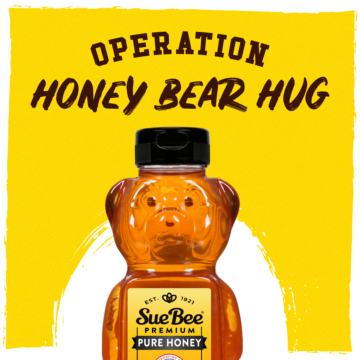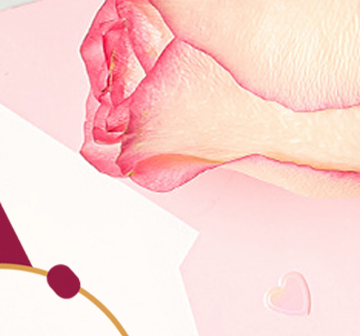Wait! Don’t Throw Away That Honey Bottle
You can help with sustainability for our beloved honeybee
We have a passion for finding new ways to upcycle our empty honey bottles. Have you seen our Glitter Bear and Night Bear that we posted on our Facebook page? Ever filled an empty SUE BEE® honey bear bottle with colorful pebbles? Voila! It’s a cool paperweight!
Our new favorite way to reuse our empty honey containers is all about sustainability. We often say that our honey is “naturally sustainable” because we produce it ethically. And all of our 200+ family beekeepers ensure our honey is pure and that the honeybees are well taken care of, which means we can continue to offer the best honey today and for future generations.
Sustainability also means we are consistently searching for new ways to create forgeable land for honeybees, and we encourage everyone to plant honeybee-friendly plants and flowers in their yards, gardens and community spaces. This brings us to our latest way to repurpose your empty containers: succulent planters.
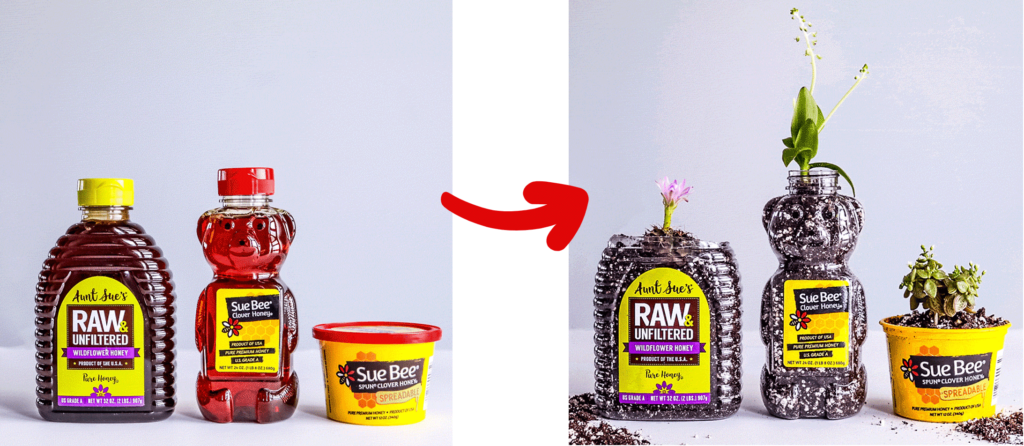
As you can see from the images above, we’ve taken an empty tub of SUE BEE® SPUN® honey, a SUE BEE® honey bear and an AUNT SUE’S® Raw & Unfiltered Honey and planted three different kinds of flowering succulents. There are a wide variety of flowering succulents that are ideal for planting in small vessels like our empty honey containers. (Take a look at this article for more types of succulents to use: “18 Popular Flowering Succulents.”)
These are “starter plants” that you can begin in a small container like ours, and then transplant to a spring/summer garden where they can grow and become forgeable food for honeybees.
Help for all honeybees
We’re not picky when it comes to helping the honeybee. Whether it’s creating new forgeable land and plants for our beekeeper families that are part of our Sioux Honey Co-op, or making sure wild bees have plenty of food sources, as well, we want to help.
If you’re a fan of our honeybee friends, you’re probably aware of their plight in recent years. Honeybees have had a tough time surviving, and the honeybee population has been losing significant percentages of their population each year. Fortunately, Sioux Honey and other commercial beekeepers have been able to make up for the losses by helping create new hives of honeybees.
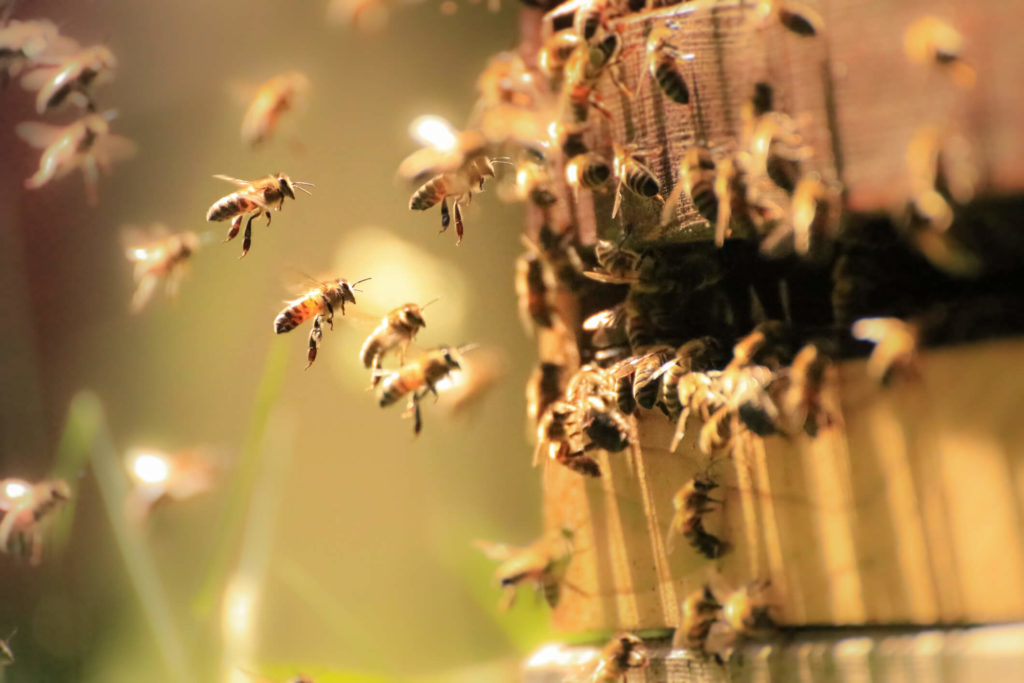
So, why have honeybees been dying at a higher rate in the past 15 years? There are several reasons:
- A decrease in forgeable land due to monoculture farming.
- Increased use of pesticides and herbicides that are harmful to bees.
- Loss of biodiversity due to circumstances like climate change.
- Destruction of habitats that offer shelter for bees via forest fires, floods, tidal surges from hurricanes, and other natural disasters.
- The relentless varroa mites.
- Small hive beetles.
- And mysterious, hard-to-pinpoint reasons that often fall under the label of “colony collapse disorder,” where entire colonies disappear overnight.
Sioux Honey beekeepers to the rescue
As we mentioned, beekeepers like Sioux Honey Co-op members have been keeping up with the losses by helping create new hives through the “splitting” of healthy hives. Beekeepers take a portion of an established colony and transfer it to a separate hive nearby, and thus create two colonies from one.
At this point, you’re probably asking, “What about the queen?” Beekeepers can either let the new hive create a new queen from the existing brood (honeybee eggs, larvae and pupae) that is transferred to the new hive, or they can buy a queen from a business that produces queens for sale to beekeepers, and then introduce that new queen to the new hive.
But, even with the beekeepers’ ability to create new hives, the prospect of honeybee losses (including feral or wild bees) is concerning news, considering honeybees – the world’s great pollinators – are responsible for pollinating about one-third of the global food supply. Specifically, of the 100 crops that provide 90% of our global food supply, 71 are pollinated by honeybees and other pollinators.
According to a 2018 report from the USDA, honeybees pollinate an estimated $15 billion in crops in the United States alone each year – from almonds and citrus fruits to vegetables like pumpkins, zucchini, cucumbers and many more – LOTS more. Globally, that number ranges between $235 and $577 billion per year, according to the Food and Agriculture Organization of the United Nations.
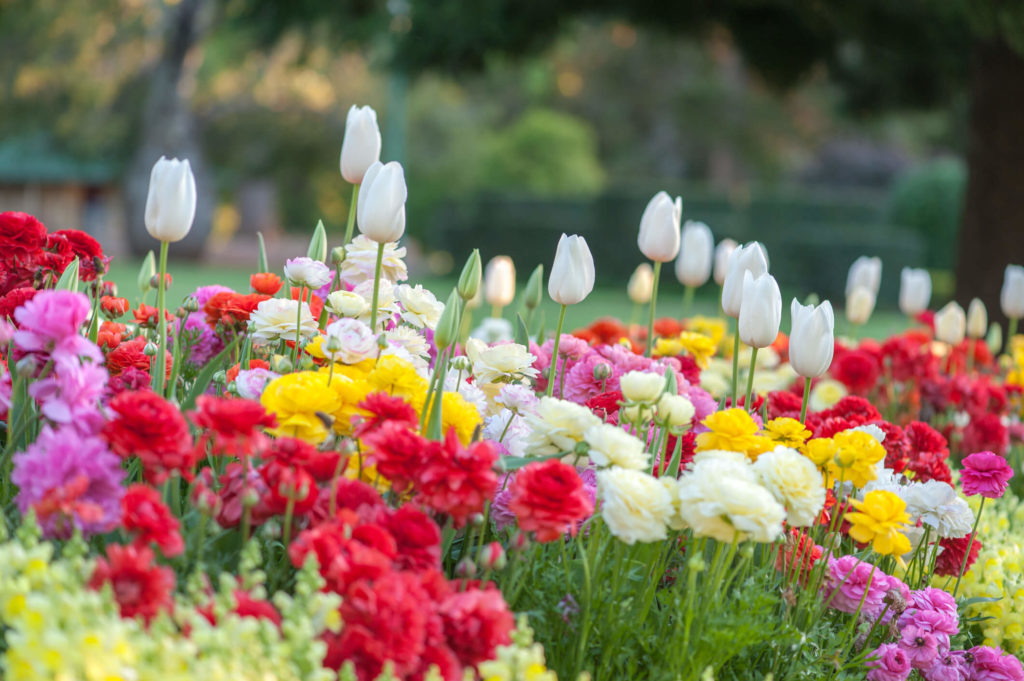
Here’s where you come in
So maybe you’ve wondered, “How can I help?” Well, start with those succulents we talked about above. Then, if you are able and have the space, create a honeybee-friendly garden. Planting flowers and plants that honeybees, butterflies and other pollinators can forage not only helps sustain the honeybee, it also adds colorful, natural beauty to a yard. It’s a win-win.
And you don’t need a sprawling homestead to create a bee-friendly flower garden. It can be a small area of your yard and as modest as a window container or rooftop patch. The goal is to add to the shrinking amount of natural flower-rich habitat for honeybees. In return, the bees will pollinate your flowers and can help provide a harvest of fruits, seeds and vegetables that you and others in your neighborhood might plant.
Before you get started, consider these five tips:
1. Plant native flowers – Plant flowers that bees in your area are used to – ones that are uniquely adapted to your region. It’s a good idea to visit a local garden center whose experts can help you find the perfect bee-friendly flowers. Plus, they will carry seeds and flowering plants that are specifically suited for your area.
2. Single-flower tops are ideal – Try to select single-flower tops for your bee garden, such as daisies and marigolds, rather than double-flower tops, such as double impatiens. Double-headed flowers look pretty, but they also produce much less nectar and make it tougher for bees to access pollen.
3. Variety is the spice of life for bees – Mix up the selection of the types of flowers you plant so you can have blooms during as many seasons as possible. That way, bees have a consistent food source on which to dine. More examples include: springtime bloomers – crocus, hyacinth, borage, calendula and wild lilac; summertime bloomers – cosmos, echinacea, snapdragon, foxglove and hostas; fall bloomers – zinnias, sedum, asters, witch hazel and goldenrod.
4. No need to make it high maintenance – It’s important to remember that a bee-friendly garden doesn’t need to rely on constant upkeep. In fact, this is the type of garden that you can plant and then let grow.
5. About pesticides and fertilizers – Don’t use them in a bee garden. They can be toxic to bees. Ladybugs, spiders and praying mantises will naturally keep pest populations in check. If you must, use only natural pesticides and fertilizers.
Share your garden with us! If you plant a succulent in an empty Sioux Honey container or plant a summer bee garden, we would love to see it. Be sure to post a photo on one of our social channels: Facebook, Twitter, Instagram or Pinterest.

